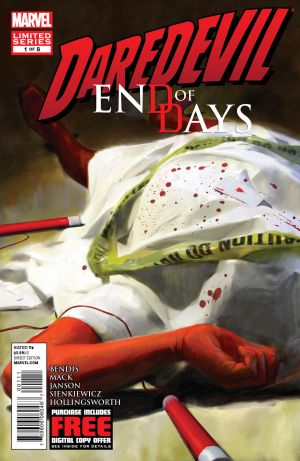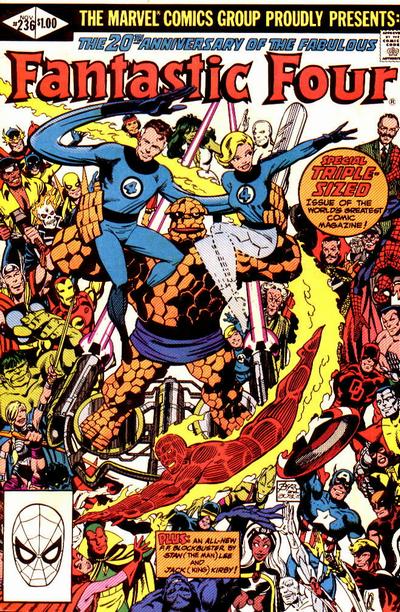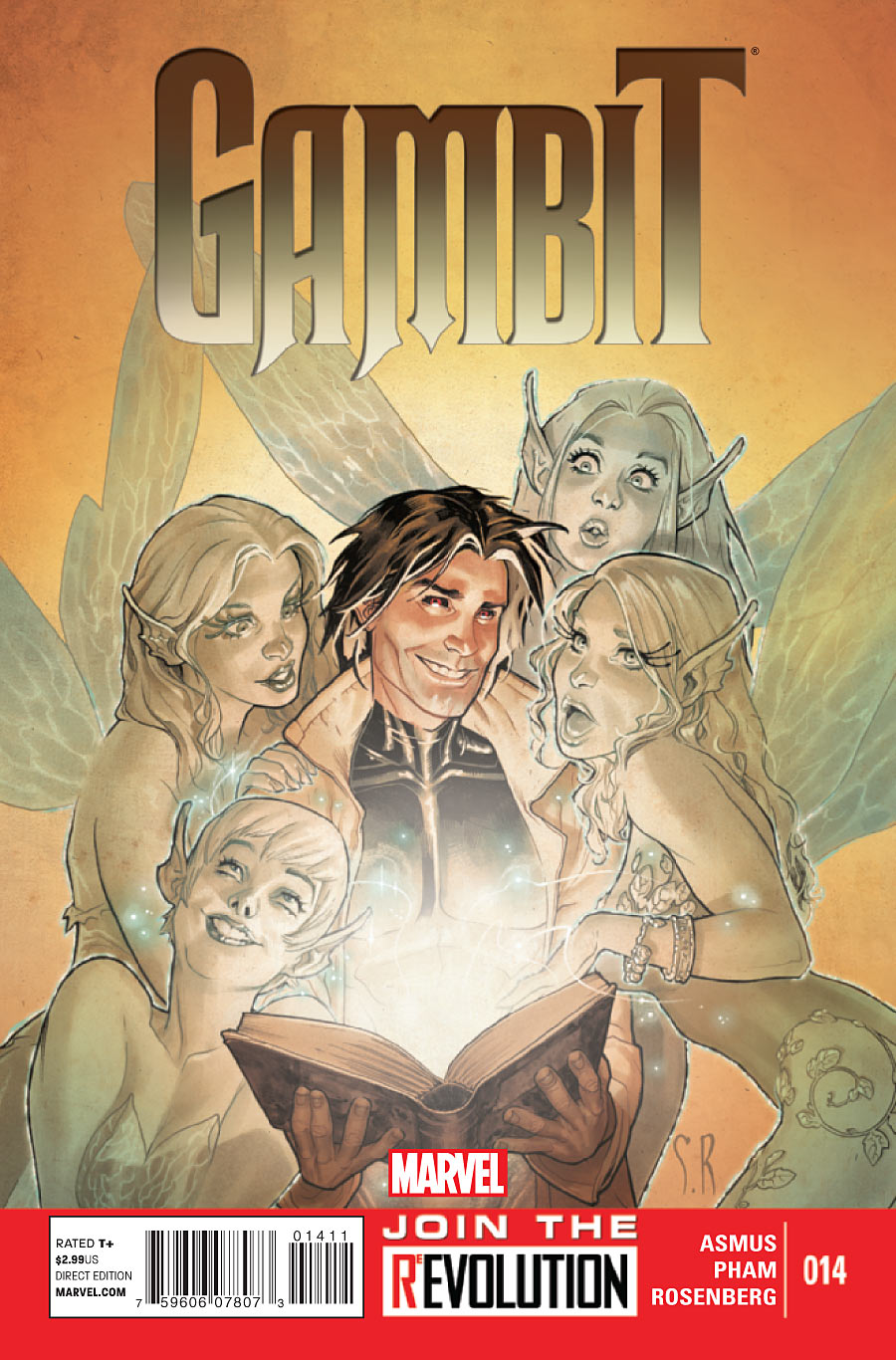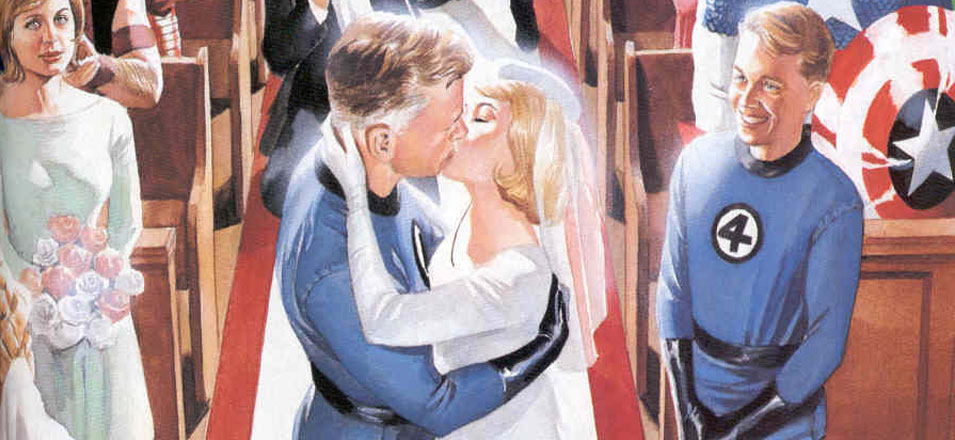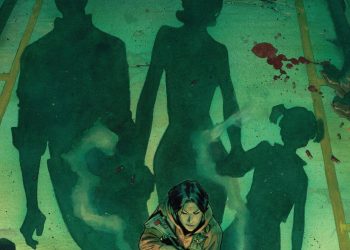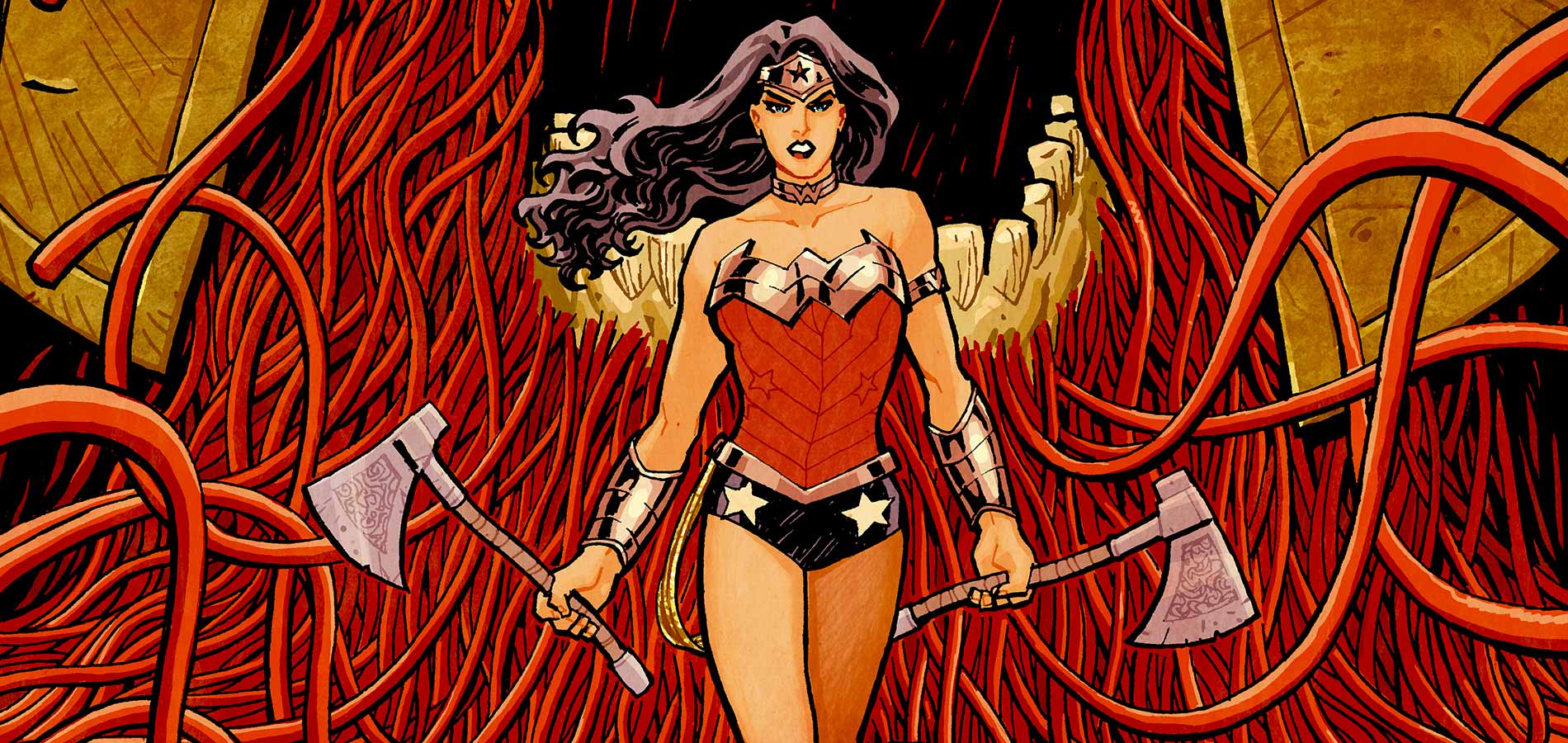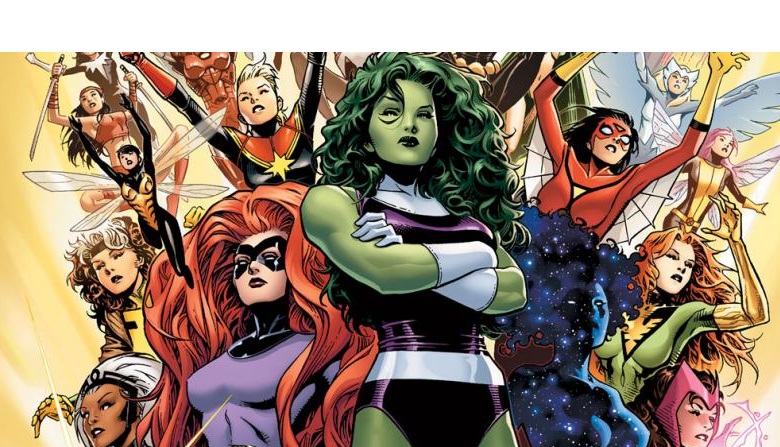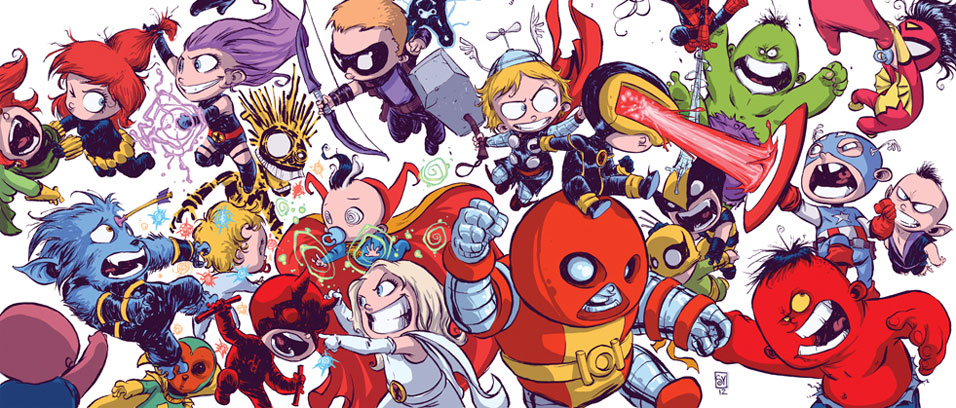
Daredevil: End of Days #1 (of 8)
Written by Brian Michael Bendis & David Mack
Pencils by Klaus Janson
Finished art & paintings by Bill Sienkiewicz
Colors by Matt Hollingsworth
Review by Joey Braccino
Verdict:
I’m going to start with the verdict for this comic, because to properly review it, we need to talk about Brian Michael Bendis and Matt Murdock for a little bit. Before I get into all that though, I want to just say BUY THIS BOOK. Daredevil: End of Days is the follow-up (and finale) to Bendis’ seminal run on the character from 2001 to 2006. It may be a “What If?” story, but Daredevil: End of Days is a throwback to what Bendis’ comics were like before he started writing ALL The Avengers titles and the dozen Marvel events that he headlined. And the artwork is simply amazing.
Review:
Before we get into our review of Daredevil: End of Days, let’s have ourselves a little history lesson. The year was 1999. Filmmaker Kevin Smith and newly-Marvel-exclusive-artist Joe Quesada were asked to relaunch Daredevil under the new Marvel Knights imprint. They conjured up the now-classic eight-issue “Guardian Devil” storyline, which featured the (::13 year old spoilers::) death of Karen Page and more street-level team-ups than you could possible imagine. It was brutal, it was gritty, and it helped to usher in both the Marvel Knights imprint’s most successful period as well as the 21st century mode of comics storytelling—darkness, disillusionment, and deep questions about the nature of heroism and the relevance of tights-wearing viligantes. “Guardian Devil” eventually became the inspiration for the (unfairly) oft-maligned 2003 film Daredevil.
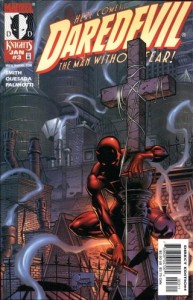
After Smith and Quesada’s groundbreaking storyline finished, innovative comics writer and artist David Mack took over Daredevil for about a dozen issues. Mack’s first arc, “Parts of a Whole,” was a visually stunning pastiche of collage and painted artwork that introduced Maya “Echo” Lopez to the Marvel pantheon of damaged, complex heroes. At Mack’s insistence, newly-inducted Editor-In-Chief Joe Quesada teamed indie-comics wiz Brian Bendis with Mr. Mack for a four issue arc entitled “Wake Up.” Bendis had already hit the mainstream comics world running with his reimagined and recently launched Ultimate Spider-Man series, and, after the “Wake Up” storyline, Quesada asked Bendis to take over the Daredevil ongoing permanently with issue #25.
And the rest, as they say, is history. For 6 years, Brian Bendis and artist Alex Maleev turned out one of the most consistently fascinating and critically lauded ongoing comics series in recent memory. Before turning over writing and art duties to Ed Brubaker and Michael Lark, Bendis and Maleev took Matt Murdock on a never-ending rollercoaster of emotional breakdowns, crime-inspired brutality, and mental trauma. The dark, gritty, down-in-the-streets urban drama of Bendis’ run established the mood and tone for Daredevil comics through Brubaker, Matt Fraction, and Andy Diggle’s subsequent runs—each story pushing Matt Murdock deeper and deeper into a hole of despair and violence. It wouldn’t be until Mark Waid’s recent (and equally lauded) run on Daredevil that Matt Murdock’s four-colored forays would return to the swashbuckling stories of old.
But at some interview in the middle of 2007, after he had finished up his seminal run on the character and moved on to the constant Avengers inspired event comics, Brian Michael Bendis suggested that he had one final storyline in the works for ol’ Hornhead. One final tale to tell—the last Daredevil story.
And then that was it. For about 4 years, no one heard anything concrete about “Daredevil: End of Days.” There were some rumors that some scripts had been done or some panels completed, but nothing was ever officially solicited for sale. At some point, Marvel announced that David Mack would co-write the series with Bendis and that legendary comics artist Klaus Janson would be doing the pencils, but still no release dates.
Finally, 5 years later, Daredevil: End of Days has hit the stands. And it is just as dark and twisted and grimy as Bendis’ original run on the character. And, in the first few pages, it keeps it’s promise of being the “last Daredevil story.”

I won’t go to much into the plot of Bendis’ earlier run, even though End of Days is meant as a “Daredevil: The End” type tale based on those plot threads. He and co-writer Mack do an excellent job of recapping the those details in a few gorgeous pages in issue #1, so no worries if you’re a new reader.
Daredevil: End of Days opens with a brutal brawl between Daredevil and arch-nemesis, Bullseye. Immediately, current readers might be thrown off because a) Bullseye is dead in current Marvel continuity, and b) this Daredevil is nothing like Mark Waid’s current incarnation of the character. This miniseries is clearly meant for fans of the Bendis/Brubaker/Fraction/Diggle version of the character—heck, even old Miller fans might dig it—and I wonder if readers looking for that more heroic, brighter fare would appreciate the urban violence and noir-esque angst on these pages.
The story follows Daily Bugle reporter Ben Urich as he tries to write Matt Murdock’s story. This vehicle allows Bendis and Mack to recap old storylines for new readers, as well as establish the “new” world of the story. It would seem that the action of End of Days takes place several years down the line, in a future when print media is near extinction and the recognizable MU heroes are dead or retired. We’re immediately hit with a level of despair and hopelessness not seen in the Marvel U since the “Dark Reign” period, and, oddly, it’s refreshing given the “Heroic Age” and standard superhero fare that we’ve been bombarded with over the last two years or so. Think Rucka’s Punisher, except the artwork isn’t as clean.
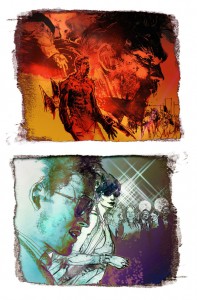
Klaus Janson is a comics legend. His collaborations with Frank Miller on Daredevil and The Dark Knight Returns helped make both of those series perennial classics in the comics medium. His pencils here are scratchy and moody. He captures the kinetic brutality of the opening brawl just as deftly as he does the quiet, dour interview sequences with Ben Urich. His panel layouts are at times reminiscent of the classic ‘80s format of compressed panels and, at other times, the cinematic spreads of contemporary comics. Combine his work with Matt Hollingsworth equally somber color palette, and you have one stunning comic that looks more like a master-class in how to tell a visual story than anything else. Bill Sienkiewicz provides some lovely finished artwork during the aforementioned “recap” sequence.
This miniseries promises to be a cruel, gritty, noir-drama that explores the nature of vigilantism and the mythos of The Man Without of Fear. Just like Bendis’ original run on the character. This time, however, everything is much more final.

